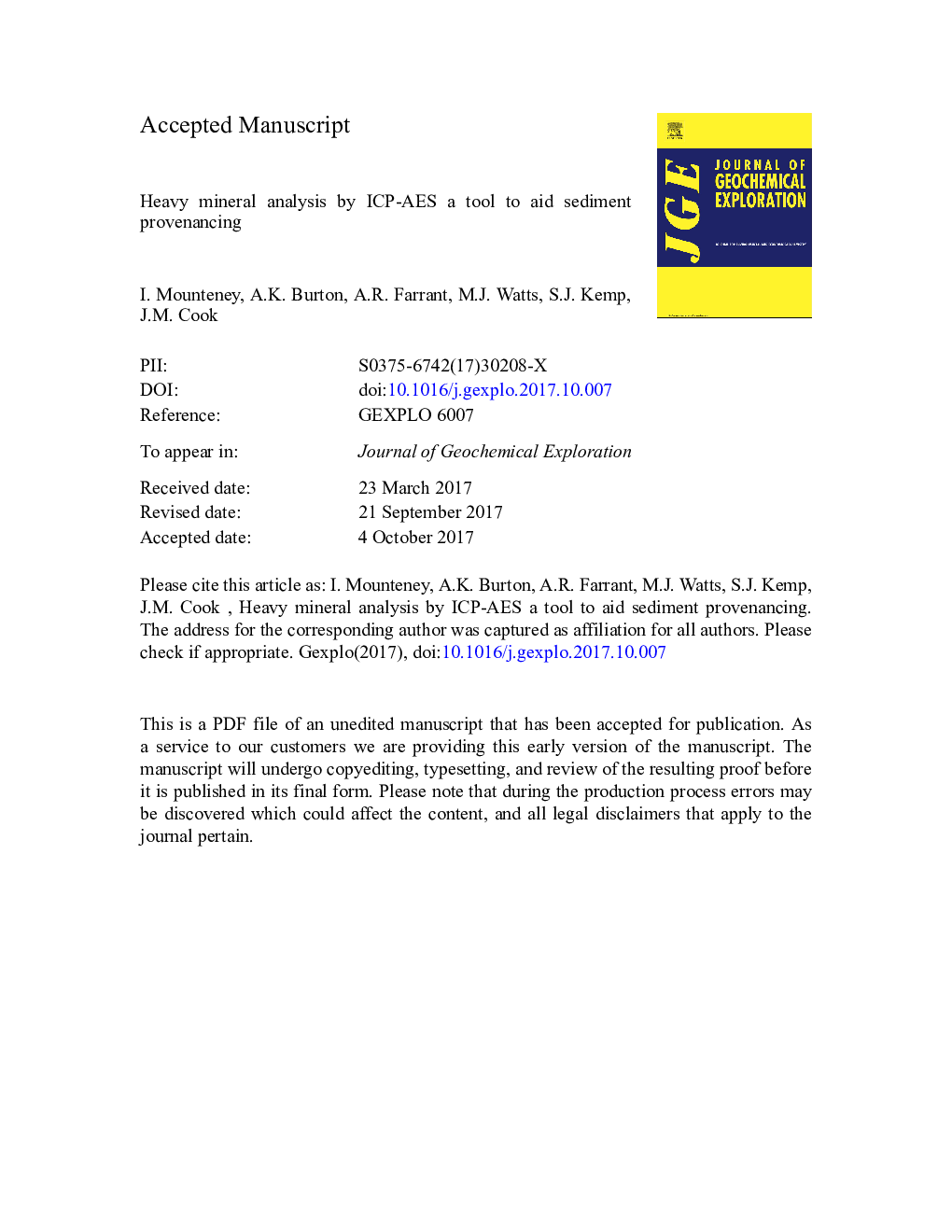| Article ID | Journal | Published Year | Pages | File Type |
|---|---|---|---|---|
| 8866166 | Journal of Geochemical Exploration | 2018 | 41 Pages |
Abstract
Correlation and provenancing of sediments/sedimentary rocks can be achieved by several techniques; a common approach is through the identification and quantification of heavy minerals using a petrological microscope. This can be time consuming, the analysis of heavy minerals by inductively coupled plasma atomic emission spectroscopy offers a faster alternative, by determining key elements associated with specific heavy minerals. Here we outline a method for determining heavy mineral species though ICP-AES using high temperature fusion with a lithium metaborate flux to ensure complete dissolution of resistate minerals. The method was tested in a provenance study of desert sands from the United Arab Emirates. The results are compared with those derived from traditional optical microscopy. These show good agreement for minerals with specific geochemical signatures, whilst the overall geochemistry of the heavy mineral concentrate was diagnostic of potential sediment sources. This geochemical approach is capable of processing large numbers of samples rapidly and is advocated as a screening technique. A combination of geochemical and mineralogical data produced by these techniques provides a powerful diagnostic tool for studies of heavy mineral signatures in sediments frequently used in mineral reconnaissance, paleogeographic reconstruction and reservoir characterisation in the petroleum industry.
Related Topics
Physical Sciences and Engineering
Earth and Planetary Sciences
Economic Geology
Authors
I. Mounteney, A.K. Burton, A.R. Farrant, M.J. Watts, S.J. Kemp, J.M. Cook,
